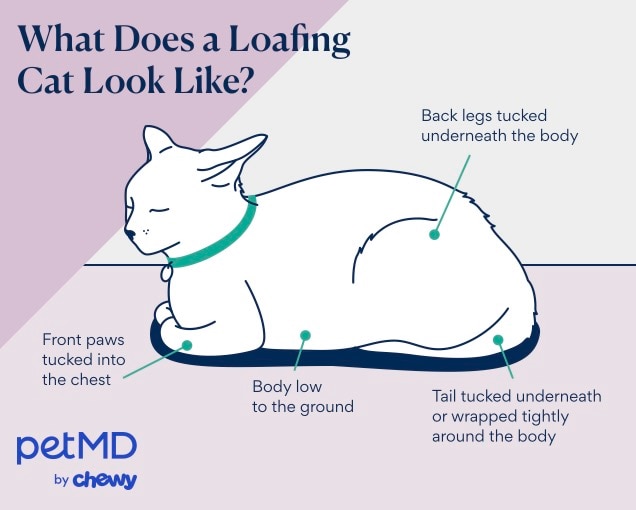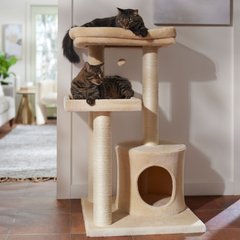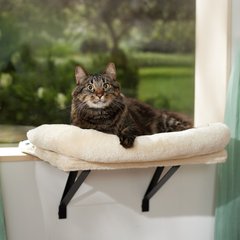Why Do Cats Loaf?
Louno_M/iStock / Getty Images Plus via Getty Images
Have you ever noticed your cat sitting with their paws tucked underneath them, looking like a loaf of bread? This quirky cat behavior, known as “loafing,” is more than just a cute photo opportunity.
Let's explore why cats loaf and what it might tell you about their well-being.
What Is a Cat Loaf?

The cat loaf position is exactly what it sounds like: a cat tucks all four paws and tail underneath their body. While there can be slight variations, such as a visible tail, this position earned its name for a good reason.
“Think of the Sphinx position,” says Wailani Sung, MS, PhD, DVM, DACVB, FFCP. “Cats may rest on their front paws, or the front paws are tucked under their bodies. Their body is rounded. Presumably, this position would allow a cat to fit into a bread loaf pan."
Simply put, a loafing cat looks like a loaf of bread.
Why Do Cats Loaf?
While cute, this position can also provide helpful insight into your loafing cat’s needs and moods. Here are the main reasons why cats loaf.
1. They’re Comfortable
Bonnie Beaver, DVM, MS, DSc(hon), FNAP, DACVB, DACAW, professor at the Texas A&M College of Veterinary Medicine & Biomedical Sciences, explains that cats typically assume this position due to contentment.
“Several types of loafing have been described with different meanings, but the classic version is shown by cats that are comfortable in their surroundings,” Dr. Beaver says. “We can't actually measure 'happiness,’ but we can say that cats are relaxed when in this position. It would be much like when a person sits in a reclining chair."
But if your cat isn’t the loafing type, don’t worry. Dr. Beaver says this blissful state is most common among certain cat personalities.
“Cats that are more laid-back tend to loaf more often than those that could be described as ‘busy’ or ‘anxious,’” she says.
2. They Trust You
When your cat chooses to loaf near you, it's a meaningful display of trust. While they might loaf anywhere in the house, deliberately picking spots close to you—like at your feet or next to you on the couch—shows they feel completely secure in your presence. It's also a sign you have a strong bond with your cat.
3. They’re Cold
When it’s cold, you may put your hands in your pockets to stay warm. Similarly, a cat may loaf to conserve body heat.
"Cats’ feet and lower legs have little fat covering and, just like our fingers and toes, can get cold faster than the rest of the body,” says Dr. Beaver. “By tucking the feet under the body, they are protected from exposure to the cold."
4. They Feel Threatened
Cats may take certain positions to protect themselves from threats, whether real or imagined.
This includes the loaf position, which allows them to tuck their limbs and vital organs away from predators while they rest. This is why you might see your cat loafing at the vet—they’re out of their comfort zone and on high alert.
This defensive posture has another advantage should an adversary approach: "The loafing position allows for cats to move quickly compared to lying completely down on their sides, Dr. Sung says.
5. They’re Sick or Injured
Certain variations of the loafing position—along with changes in your cat’s posture, vocalizations, or activity level—can signal health issues.
“Any sudden change in behavior should increase your level of concern about a cat,” Dr. Beaver says. “If the cat spends a lot of time loafing when [they] didn’t before, it could be a sign that [they’re] running a fever and not feeling good.”
Dr. Sung suggests keeping a close eye on your cat’s body language to gauge how they’re feeling.
"When a cat is in the loaf position with their face planted down or body more in a hunched position, these signs may indicate they’re either very tired or not feeling well,” Dr. Sung says. “If you interact with them by reaching out to gently pet them or speak with them, cats who are ill may have a reduced response and not move from that position."
According to Dr. Beaver, a sick or injured loafing cat may also display these signs of distress:
-
Changes in their usual personality or routine
-
Reluctance to climb stairs or jump onto favorite perches (this may indicate joint pain or mobility issues)
-
Changes in litter box habits, such as eliminating outside the box
You know your cat best. If you notice any changes in their loafing habits (or any other unusual behaviors), schedule a visit with your veterinarian. Otherwise, enjoy the cat loaf position for what it is—a cute and quirky way for your cat to relax.
Recommended Products
Cat Loafing FAQs
Are cats happy when they loaf?
Most of the time, a cat in the loaf position is happy and comfortable. However, if you notice your cat pressing their face down, hunching more than usual, or staying in this position for unusually long periods, these could be signs they're not feeling well.
Why does my cat loaf and stare at me?
When your cat loafs and stares at you, they're likely showing a combination of relaxation and social interest.
“Some cats may just want to check in with their [pet parents] while they’re loafing nearby,” says Dr. Sung. “They may be patiently waiting for the [pet parent] to give them attention or enjoy resting quietly [nearby]." So, while your cat might be hoping for treats or some pets, they could also simply be content to share space with their favorite human.


